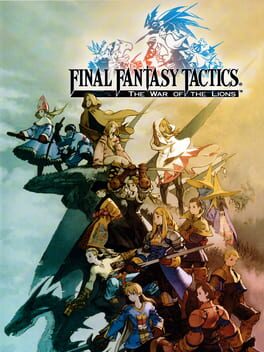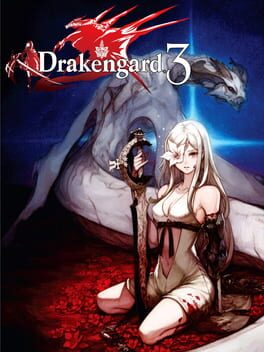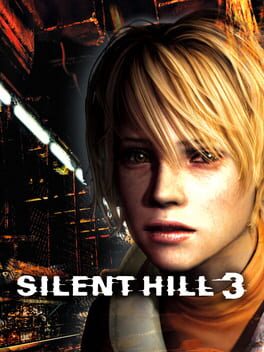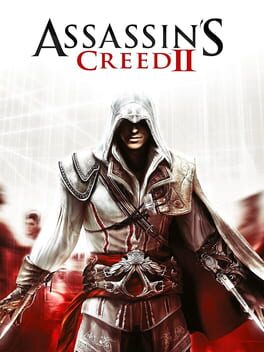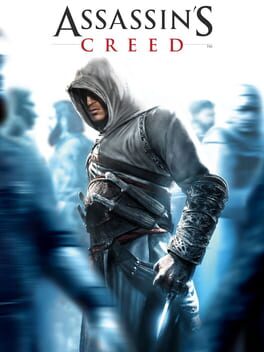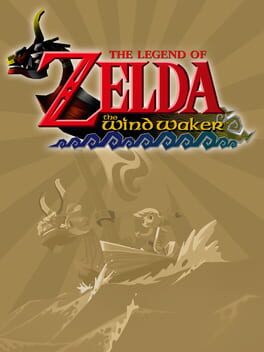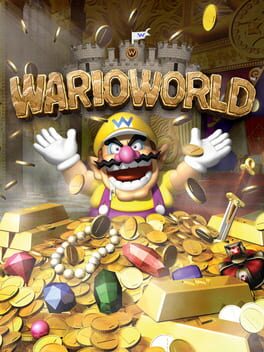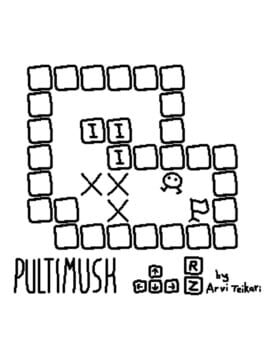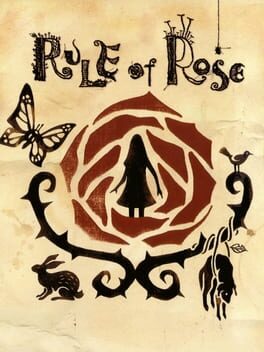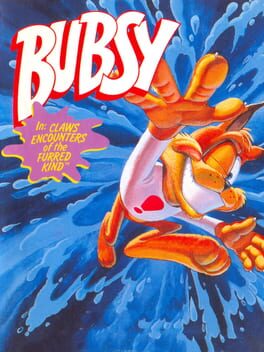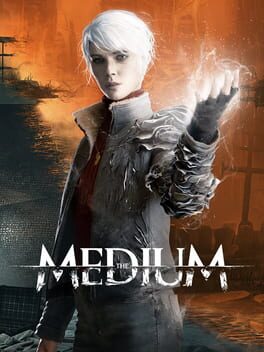wdyt
This is a strange RPG. Literally all successful actions result in accrual of EXP and JP. This means, you can get everything you want from a job for all the characters in your party in a single fight as well as adjust their Brave and Faith the maximum permanent amount in a single fight as well. You can, equipment and unique characters aside, build your endgame party in the first room in the game after a few fights. This would require knowledge of the jobs and their abilities first so you can focus said grinding, but it's there as a seemingly available option not requiring exploits. I'm not sure when the best time to do this grinding would be. You will not naturally obtain the game's most powerful classes and abilities without grinding, and there's nothing stopping you from grinding when you hit a wall (unless you overwrite your only save in a campaign or something). On my last run, I did make my endgame party early, but I can't say that was the best way to play it or that it was fun. Putting the crew together honestly isn't any fun at all. The opposite extreme of not knowing how to form your party and getting stuck on a fight because all your guys suck is also pretty bad.
This update adds new classes, new equipment, and a couple of multiplayer modes. It's the most content-rich version. I'd suggest either emulating it or getting the patch to deal with the slowdown.
I'm kind of confused about my feelings about the game as it comes across to me as strangely sandboxy despite its genre. You really are free to mold your party as you see fit without only gentle suggestions either way (female units tend to perform better with magic and male units tend to perform better with physical combat, the protagonist scales equally at both). This highly experimental approach to party-forming did hold my attention across several playthroughs, but, knowing how the systems work, I have no desire to play it again.
I'm torn on picking an overall rating for how it plays. It's definitely not fun when you know what you're doing, but I'll instead review it as a large puzzle you'll unravel that's perhaps overly cryptic. That would at least mean it was interesting for the initial run. 2.5/5
This update adds new classes, new equipment, and a couple of multiplayer modes. It's the most content-rich version. I'd suggest either emulating it or getting the patch to deal with the slowdown.
I'm kind of confused about my feelings about the game as it comes across to me as strangely sandboxy despite its genre. You really are free to mold your party as you see fit without only gentle suggestions either way (female units tend to perform better with magic and male units tend to perform better with physical combat, the protagonist scales equally at both). This highly experimental approach to party-forming did hold my attention across several playthroughs, but, knowing how the systems work, I have no desire to play it again.
I'm torn on picking an overall rating for how it plays. It's definitely not fun when you know what you're doing, but I'll instead review it as a large puzzle you'll unravel that's perhaps overly cryptic. That would at least mean it was interesting for the initial run. 2.5/5
2013
Played on RPCS3 at 4k 60fps, so no performance issues on my end.
The gameplay's better than Drakengard 1, for sure. The lock-on is more competent, but because of the increased size and movement of enemies, and the way they're mixed and match, you'll probably have a harder time seeing. There's the addition of a perfect-block, and certain encounters basically force it to be mandatory (which is good). A regular block drains your stamina-meter which is also used for "special" attacks. Bosses won't sit still for your combos without doing stunning them with perfect-blocks, and perfect-blocks instantly put an end to the ridiculous poise and defense-buffs possessed enemies get. Normal combat escalates quite a bit in difficulty, which was surprising as there are no difficulty-settings in Drakengard 3. The side-missions unlocked in branch D all but necessitate the infinite blood outfit (which in turn gives you infinite use of the game's powered up mode which speeds you up, slows everyone down, and increases your attack quite a bit).
There's a bit of platforming, and a tiny learning-curve of trial-and-erroring which ledges can be grabbed and thinking to do a special attack in midair to extend a jump slightly. There are jumps you cannot make otherwise.
The weapon system returns, but getting them is quite easy this time. Instead of having to hit arbitrary and cryptic sub-mission goals, they're in chests lying around in missions, given for side-missions, or bought in the store. The game makes it easy to track down chests as it shows which chests have been grabbed already in order of appearance, so you can replay specific verses to pick up something if you miss it. Upgrading weapons is a monstrous chore though. Instead of it just being based on kill count, it requires an unnaturally high amount of gold. Both to buy them, and to buy all the upgrade materials you need. You will be grinding for a long time if you want this done.
Dragon combat, I'd say, is a downgrade. Instead of the flight-simish combat of Drakengard 1, you're either in basic rail-shooter stages or in simplistic action stages where most attacks are guided by a generous lock-on.
The story, once again for a Taro game, reveals itself as secretly interesting if you can stick it out. The first branch was rather miserable to me as it was just antisocial anime-dialogue getting spewed by a bunch of stupid people for hours. It made me appreciate the dull medieval fantasy storytelling of the first game in hindsight. Eventually, you find out a weird robot can manifest hypothetical branches where things turn out differently, and this robot basically trial-and-errors you into branch D so you can actually succeed with your goal. This kinda meta-storytelling renders every ending equally valid in a way other "open to interpretation" stories don't by highlighting the divergences so literally. This robot also steps out of its meta observational role to help you directly in branch D, which fits with NieR's tradition of self-sacrifice to make the ending happen.
I did want to go over the rhythm section that closes off Branch D. It's weird to compare it to the similar section that ended Drakengard 1. It's "easier" as far as the patterns go, but it's grueling as far as its length and timing those inputs. I thought it was pretty fun, but I like rhythm games a lot. YMMV
I don't think it gets interesting enough to justify the curious, but that's from the perspective of someone who played Drakengard 1 and both NieR games. This game would be wild to someone who hadn't seen a narrative like it before, but I can't really judge it from that perspective now.
2/5
The gameplay's better than Drakengard 1, for sure. The lock-on is more competent, but because of the increased size and movement of enemies, and the way they're mixed and match, you'll probably have a harder time seeing. There's the addition of a perfect-block, and certain encounters basically force it to be mandatory (which is good). A regular block drains your stamina-meter which is also used for "special" attacks. Bosses won't sit still for your combos without doing stunning them with perfect-blocks, and perfect-blocks instantly put an end to the ridiculous poise and defense-buffs possessed enemies get. Normal combat escalates quite a bit in difficulty, which was surprising as there are no difficulty-settings in Drakengard 3. The side-missions unlocked in branch D all but necessitate the infinite blood outfit (which in turn gives you infinite use of the game's powered up mode which speeds you up, slows everyone down, and increases your attack quite a bit).
There's a bit of platforming, and a tiny learning-curve of trial-and-erroring which ledges can be grabbed and thinking to do a special attack in midair to extend a jump slightly. There are jumps you cannot make otherwise.
The weapon system returns, but getting them is quite easy this time. Instead of having to hit arbitrary and cryptic sub-mission goals, they're in chests lying around in missions, given for side-missions, or bought in the store. The game makes it easy to track down chests as it shows which chests have been grabbed already in order of appearance, so you can replay specific verses to pick up something if you miss it. Upgrading weapons is a monstrous chore though. Instead of it just being based on kill count, it requires an unnaturally high amount of gold. Both to buy them, and to buy all the upgrade materials you need. You will be grinding for a long time if you want this done.
Dragon combat, I'd say, is a downgrade. Instead of the flight-simish combat of Drakengard 1, you're either in basic rail-shooter stages or in simplistic action stages where most attacks are guided by a generous lock-on.
The story, once again for a Taro game, reveals itself as secretly interesting if you can stick it out. The first branch was rather miserable to me as it was just antisocial anime-dialogue getting spewed by a bunch of stupid people for hours. It made me appreciate the dull medieval fantasy storytelling of the first game in hindsight. Eventually, you find out a weird robot can manifest hypothetical branches where things turn out differently, and this robot basically trial-and-errors you into branch D so you can actually succeed with your goal. This kinda meta-storytelling renders every ending equally valid in a way other "open to interpretation" stories don't by highlighting the divergences so literally. This robot also steps out of its meta observational role to help you directly in branch D, which fits with NieR's tradition of self-sacrifice to make the ending happen.
I did want to go over the rhythm section that closes off Branch D. It's weird to compare it to the similar section that ended Drakengard 1. It's "easier" as far as the patterns go, but it's grueling as far as its length and timing those inputs. I thought it was pretty fun, but I like rhythm games a lot. YMMV
I don't think it gets interesting enough to justify the curious, but that's from the perspective of someone who played Drakengard 1 and both NieR games. This game would be wild to someone who hadn't seen a narrative like it before, but I can't really judge it from that perspective now.
2/5
1994
Of the big 3 Nintendo IPs, along with Zelda and Mario, I've always found Metroid the least interesting. The games aren't bad, I just think they're less strong comparably when it comes to platforming and combat. This observation isn't addressed here in the third game in the series.
It might seem strange to make that claim when you see the scenario variety, but the complexity of the platforming peaks early on when you don't have any upgrades. The later scenarios, like running through a room with a speed booster or using the grappling hook, are just employments of an upgrade. Nothing mechanically interesting is happening. Same with weapons, you just get stronger pew-pews.
What the game actually does well is its map, and, in this way, it's probably the strongest game in the entire series. The genre this game falls in is described pretty firmly as being about constant backtracking to put new upgrades to use. I'd argue Super Metroid is a linear game cleverly disguised as one with exploration. The path forward doesn't stop. The end of each area dumps at the start of the next. It's an ingenious map, and you can rest assured that even if you don't know exactly where to go at the end of an area you are still in the starting point of the next one. Exploration tends to be short detours for a small optional upgrade instead of a means to progression.
It's not the best jump-and-shoot game, but it is a great one. 4/5
It might seem strange to make that claim when you see the scenario variety, but the complexity of the platforming peaks early on when you don't have any upgrades. The later scenarios, like running through a room with a speed booster or using the grappling hook, are just employments of an upgrade. Nothing mechanically interesting is happening. Same with weapons, you just get stronger pew-pews.
What the game actually does well is its map, and, in this way, it's probably the strongest game in the entire series. The genre this game falls in is described pretty firmly as being about constant backtracking to put new upgrades to use. I'd argue Super Metroid is a linear game cleverly disguised as one with exploration. The path forward doesn't stop. The end of each area dumps at the start of the next. It's an ingenious map, and you can rest assured that even if you don't know exactly where to go at the end of an area you are still in the starting point of the next one. Exploration tends to be short detours for a small optional upgrade instead of a means to progression.
It's not the best jump-and-shoot game, but it is a great one. 4/5
2003
This review contains spoilers
Skip this first paragraph if you want to just start with the gameplay breakdown.
I think most would agree that most of Yoko Taro's games are not fun to play. I would go as far as to say that none of them are, but I'm aware that Automata fans would sharply disagree with that. I think none of his games are satisfying tests of dexterity, pattern-recognition, or ability to strategize. At best, they're B action-games. At worst, they're miserable repetitive slogs. They're never all of one or the other though. I do think Taro's direction is in service of an experience at the expense of gameplay. Which means, these games wouldn't have their current strongest points if say Taro was writing and someone else was directing. You kind of have to accept that from an experience-crafting perspective, you're stuck with a bad/mediocre game. I do feel that Taro can sometimes reward your patience with something that's at least interesting.
Ground combat goes like this; you mash square to do light-attacks. At various points in this chain, you can press triangle to unleash a finisher. Hitting enemies with non-magic attacks builds your chain. Enemies drop orbs when you hit them, 17, 36, 57, 77, and 100 times in one chain. The first three orb drops will be a green one for health if you need to heal or a red orb that creates a small shockwave. The fourth orb is always a red one regardless of your HP. The fifth orb is the most useful. It's a black orb that massively powers up Caim so that he can one-shot the mooks and work through the sponges quicker. It does take a bit of strategy and skill (pick the correct weapon, space your attacks right) to do this later in the game. Another orb drops at 150, but you probably won't do this often. I didn't get a chain much further than that either.
Aerial combat goes like this; your dragon flies forward by itself and has tank-controls otherwise, something important to remember when the auto-lock points you at something. L1/R1 dodge you left and right, relative to where you're facing, and pressing both at once nets you a quick-turn. Cross boosts your speed, and you can still L1/R1 dodge while holding cross. Tapping square unleashes a strong fireball that builds a little magic. Holding square charges weaker homing fireballs that build more magic. A magic-attack is screen-clearing. You can also ride the dragon in most of the ground-combat stages, and the main difference is a lack of 3D flight-control (you can't ascend/descend) and you don't have the homing-attacks.
The RPG-leveling doesn't really matter for the most part. You can level up Caim to increase his HP, but all damage is avoidable and some bosses can still shred you with a maxed HP gauge. You're better off learning to dodge than grinding for EXP. Leveling up Caim's damage doesn't really matter either. Weapons have their own EXP that's accrued by defeating enemies, but the weapons don't get significantly better from their starting stats. Your damage will go up by finding a better weapon. The strongest weapon in the game's starting stats match most of the other weapons at max-level. It is worth it to level the dragon. That increases its attack outright, which will reduce the game's tedium incrementally.
The last bit of gameplay is your allies. You can temporarily summon them 3 times per stage. They're out on a time-limit represented by their remaining HP. Getting hit drains it quicker, but they can't die or anything. Allies have insanely strong magic-attacks, and can cast whenever. Their attacks nuke most of the spongiest sponges in one hit, including enemies that are supposed to be immune to magic-attacks.
Enemies in the ground stages are almost all completely worthless. The only fun you can have is trying to group them to build your chain. The archers will get significantly more accurate if you're on your dragon and can knock you off pretty quick. The dragon's attacks are also strictly magical, so you'll have to get your hands dirty yourself whenever magic-immune enemies show up. Enemies in the aerial stages are better just because it's more fun to dodge things while flying around than it is to mash square on a million mooks. The boss-fights, of which there are few, are the best part of the game.
This game is also, for better or worse, insanely meaty. There are 65 weapons to collect and 3 allies. There are also plenty of hidden events and stages. Many of these are unlocked by sub-missions, some hidden some not, such as defeating specific enemies in specific locations, completing stages in a time limit, being in a stage for a long time (these ones are bad), or are just hidden in chests. The weapons in particular are hidden across every mode; events, story missions, free expeditions, and this includes ground and aerial variants. You will be playing this game for a long time if you want every weapon, even if you use a guide to hunt down the cryptic ones. I found about 10 of them by myself. The game also has 5 endings, though, thankfully, you just have to play the new chapters after getting an ending instead of going through the entire thing again. But, you do have to get all 65 weapons for the final ending (you don't have to level any of them up though).
Final Spoiler Warning, it's story time.
The game takes place in a low-fantasy alternate-reality version of 11th century medieval Europe where magic was introduced to the world. You play as Caim, a dude who lost his kingdom and his parents (they got killed by a dragon), as he tries to protect his sister. 6 years of constant fighting has made him a psychotic murderer and not particularly heroic. He mainly fights because he's perpetually angry. The game starts with a castle housing his sister, who is the current "goddess", under siege. Caim is, for better or worse, really good at fighting. But, he's just a guy. After mowing through 50-100 dudes outside the front door to get inside, he is mortally wounded and on his way out. On the ground in front of him is an also mortally wounded dragon. Caim hates dragons because they killed his parents, and the wounded dragon right there hates humans. If they enter a pact with each other, they get to live. Caim can't die because he's got shit to do, and the dragon's not interested in being dead either. They enter the pact which takes away whatever is most valuable to the human (surprisingly for Caim, this would be his ability to speak) in exchange for superhuman abilities (Caim and the dragon share a health-pool after this) and Caim gets to use the dragon's abilities (riding around on it while it blows things up) to help in combat. Caim does temporarily save his sister before she's kidnapped again, and her fiancee, and Caim's childhood friend, turns evil. You spend the rest of the campaign slogging through boring fights to get to your sister once again, and she kills herself. Turns out, the "goddess" is a person who prevents the world from ending by not killing themselves. It's ok if someone else kills them. The "goddess" status will just transfer to someone else. But, she did actually kill herself. All of the endings branch off after this point.
So, the interesting parts of the story take place in a cosmic horror apocalypse. It is, to me, fascinating to watch these people struggle to make it as each successive ending to the game gets increasingly bleak/weird. This is what the slog is for. To see this stuff.
We're reviewing a game here though. Your mileage may vary on the above story coverage, but it won't factor into the score. For its gameplay alone, the game just isn't worth playing. It's almost all bad combat almost all the time. The aerial missions might be the best part, but the game still wouldn't be worth playing if they were the only thing in it. There just aren't enough good moments to justify it. However, there are a handful of good boss fights, they're just behind the ending criteria.
The game is a 1.5/5 for me. It gets the 0.5 extra for the few good boss fights in it. However, if you're after more than gameplay, you might find this game worth checking out. I absolutely would not think less of anyone for avoiding the game because of its gameplay though. For what it's worth, I found the narrative, eventually, more interesting than NieR or Automata.
I think most would agree that most of Yoko Taro's games are not fun to play. I would go as far as to say that none of them are, but I'm aware that Automata fans would sharply disagree with that. I think none of his games are satisfying tests of dexterity, pattern-recognition, or ability to strategize. At best, they're B action-games. At worst, they're miserable repetitive slogs. They're never all of one or the other though. I do think Taro's direction is in service of an experience at the expense of gameplay. Which means, these games wouldn't have their current strongest points if say Taro was writing and someone else was directing. You kind of have to accept that from an experience-crafting perspective, you're stuck with a bad/mediocre game. I do feel that Taro can sometimes reward your patience with something that's at least interesting.
Ground combat goes like this; you mash square to do light-attacks. At various points in this chain, you can press triangle to unleash a finisher. Hitting enemies with non-magic attacks builds your chain. Enemies drop orbs when you hit them, 17, 36, 57, 77, and 100 times in one chain. The first three orb drops will be a green one for health if you need to heal or a red orb that creates a small shockwave. The fourth orb is always a red one regardless of your HP. The fifth orb is the most useful. It's a black orb that massively powers up Caim so that he can one-shot the mooks and work through the sponges quicker. It does take a bit of strategy and skill (pick the correct weapon, space your attacks right) to do this later in the game. Another orb drops at 150, but you probably won't do this often. I didn't get a chain much further than that either.
Aerial combat goes like this; your dragon flies forward by itself and has tank-controls otherwise, something important to remember when the auto-lock points you at something. L1/R1 dodge you left and right, relative to where you're facing, and pressing both at once nets you a quick-turn. Cross boosts your speed, and you can still L1/R1 dodge while holding cross. Tapping square unleashes a strong fireball that builds a little magic. Holding square charges weaker homing fireballs that build more magic. A magic-attack is screen-clearing. You can also ride the dragon in most of the ground-combat stages, and the main difference is a lack of 3D flight-control (you can't ascend/descend) and you don't have the homing-attacks.
The RPG-leveling doesn't really matter for the most part. You can level up Caim to increase his HP, but all damage is avoidable and some bosses can still shred you with a maxed HP gauge. You're better off learning to dodge than grinding for EXP. Leveling up Caim's damage doesn't really matter either. Weapons have their own EXP that's accrued by defeating enemies, but the weapons don't get significantly better from their starting stats. Your damage will go up by finding a better weapon. The strongest weapon in the game's starting stats match most of the other weapons at max-level. It is worth it to level the dragon. That increases its attack outright, which will reduce the game's tedium incrementally.
The last bit of gameplay is your allies. You can temporarily summon them 3 times per stage. They're out on a time-limit represented by their remaining HP. Getting hit drains it quicker, but they can't die or anything. Allies have insanely strong magic-attacks, and can cast whenever. Their attacks nuke most of the spongiest sponges in one hit, including enemies that are supposed to be immune to magic-attacks.
Enemies in the ground stages are almost all completely worthless. The only fun you can have is trying to group them to build your chain. The archers will get significantly more accurate if you're on your dragon and can knock you off pretty quick. The dragon's attacks are also strictly magical, so you'll have to get your hands dirty yourself whenever magic-immune enemies show up. Enemies in the aerial stages are better just because it's more fun to dodge things while flying around than it is to mash square on a million mooks. The boss-fights, of which there are few, are the best part of the game.
This game is also, for better or worse, insanely meaty. There are 65 weapons to collect and 3 allies. There are also plenty of hidden events and stages. Many of these are unlocked by sub-missions, some hidden some not, such as defeating specific enemies in specific locations, completing stages in a time limit, being in a stage for a long time (these ones are bad), or are just hidden in chests. The weapons in particular are hidden across every mode; events, story missions, free expeditions, and this includes ground and aerial variants. You will be playing this game for a long time if you want every weapon, even if you use a guide to hunt down the cryptic ones. I found about 10 of them by myself. The game also has 5 endings, though, thankfully, you just have to play the new chapters after getting an ending instead of going through the entire thing again. But, you do have to get all 65 weapons for the final ending (you don't have to level any of them up though).
Final Spoiler Warning, it's story time.
The game takes place in a low-fantasy alternate-reality version of 11th century medieval Europe where magic was introduced to the world. You play as Caim, a dude who lost his kingdom and his parents (they got killed by a dragon), as he tries to protect his sister. 6 years of constant fighting has made him a psychotic murderer and not particularly heroic. He mainly fights because he's perpetually angry. The game starts with a castle housing his sister, who is the current "goddess", under siege. Caim is, for better or worse, really good at fighting. But, he's just a guy. After mowing through 50-100 dudes outside the front door to get inside, he is mortally wounded and on his way out. On the ground in front of him is an also mortally wounded dragon. Caim hates dragons because they killed his parents, and the wounded dragon right there hates humans. If they enter a pact with each other, they get to live. Caim can't die because he's got shit to do, and the dragon's not interested in being dead either. They enter the pact which takes away whatever is most valuable to the human (surprisingly for Caim, this would be his ability to speak) in exchange for superhuman abilities (Caim and the dragon share a health-pool after this) and Caim gets to use the dragon's abilities (riding around on it while it blows things up) to help in combat. Caim does temporarily save his sister before she's kidnapped again, and her fiancee, and Caim's childhood friend, turns evil. You spend the rest of the campaign slogging through boring fights to get to your sister once again, and she kills herself. Turns out, the "goddess" is a person who prevents the world from ending by not killing themselves. It's ok if someone else kills them. The "goddess" status will just transfer to someone else. But, she did actually kill herself. All of the endings branch off after this point.
So, the interesting parts of the story take place in a cosmic horror apocalypse. It is, to me, fascinating to watch these people struggle to make it as each successive ending to the game gets increasingly bleak/weird. This is what the slog is for. To see this stuff.
We're reviewing a game here though. Your mileage may vary on the above story coverage, but it won't factor into the score. For its gameplay alone, the game just isn't worth playing. It's almost all bad combat almost all the time. The aerial missions might be the best part, but the game still wouldn't be worth playing if they were the only thing in it. There just aren't enough good moments to justify it. However, there are a handful of good boss fights, they're just behind the ending criteria.
The game is a 1.5/5 for me. It gets the 0.5 extra for the few good boss fights in it. However, if you're after more than gameplay, you might find this game worth checking out. I absolutely would not think less of anyone for avoiding the game because of its gameplay though. For what it's worth, I found the narrative, eventually, more interesting than NieR or Automata.
2003
The last 'good' Silent Hill game.
Movement received a slight nerf from Silent Hill 2. Heather can no longer strafe at full speed up/down stairs. Combat got some buffs. Heather can instantly attack out of a block, which is incredibly useful in some encounters.
The game has received some interesting changes to its structure. There is far less overworld to explore than in the first 2 Silent Hill games. The 'dungeons' more or less connect directly to one another, and there's nothing meaningful to grab on the few streets you can traverse in the game when you do get a break from them. Because of this, the game keeps up a fast pace. I wouldn't say it's any shorter than the first 2, they're all roughly the same length if you know where you're going, but you'll get through it faster since wandering around lost is going to be less of a thing. The game has a fairly high volume of optional equipment, and it's all found mid-dungeon now.
The more streamlined campaign is also tied into the game's many unlockables. The bullet-adjust now receives an increase on each clear with the ending being irrelevant. It goes all the way up to x5. Completing Hard Action now unlocks Extreme. Completing Extreme unlocks Extreme 2, completing that unlocks Extreme 3, and you can continue this process all the way up to Extreme X. Enemy precision and attacks increase every single difficulty, and Heather's HP drops from 100 on Beginner/Easy/Normal/Hard to 50hp on the Extremes. Enemy grab-attacks will be an instakill starting on Extreme 3, Closers can basically instakill you if their spin-attack connects because the follow up attack will finish you off on the ground, and the majority of the rest of the attacks will get ever closer to one-shotting you as you keep going up. Outside of those listed examples, and the obligatory one-hit-kill on the Split Worm (the first boss fight in the first 3 Silent Hills has a one-hit-kill attack on every difficulty), you can't get one-shotted by a stray smack even on Extreme X. There's the survival mechanic seen in other Japanese action-games in place where Heather will be left with 1hp left if she has more than that remaining when she's hit. The riddles on Hard aren't randomized, so you can practice for a 10 star run in a pretty straightforward manner.
Getting a 10 star run done on Extreme X (you only have to play on Hard to get the score) will take some serious practice, and the game lends itself well to making that practice easy to get. The amusement park prologue is skipped on NG+, much like the events before the diner in Silent Hill 1 are skipped on NG+, so it's quick to get back to it. The criteria of a boss timer will make you really learn how the bosses work. It's shocking how competent of an action-game Silent Hill 3 is, and how well-structured it is to arcadey scoring and replays.
I've probably played through this game more than 20 times. It's a well-deserved 5/5.
Movement received a slight nerf from Silent Hill 2. Heather can no longer strafe at full speed up/down stairs. Combat got some buffs. Heather can instantly attack out of a block, which is incredibly useful in some encounters.
The game has received some interesting changes to its structure. There is far less overworld to explore than in the first 2 Silent Hill games. The 'dungeons' more or less connect directly to one another, and there's nothing meaningful to grab on the few streets you can traverse in the game when you do get a break from them. Because of this, the game keeps up a fast pace. I wouldn't say it's any shorter than the first 2, they're all roughly the same length if you know where you're going, but you'll get through it faster since wandering around lost is going to be less of a thing. The game has a fairly high volume of optional equipment, and it's all found mid-dungeon now.
The more streamlined campaign is also tied into the game's many unlockables. The bullet-adjust now receives an increase on each clear with the ending being irrelevant. It goes all the way up to x5. Completing Hard Action now unlocks Extreme. Completing Extreme unlocks Extreme 2, completing that unlocks Extreme 3, and you can continue this process all the way up to Extreme X. Enemy precision and attacks increase every single difficulty, and Heather's HP drops from 100 on Beginner/Easy/Normal/Hard to 50hp on the Extremes. Enemy grab-attacks will be an instakill starting on Extreme 3, Closers can basically instakill you if their spin-attack connects because the follow up attack will finish you off on the ground, and the majority of the rest of the attacks will get ever closer to one-shotting you as you keep going up. Outside of those listed examples, and the obligatory one-hit-kill on the Split Worm (the first boss fight in the first 3 Silent Hills has a one-hit-kill attack on every difficulty), you can't get one-shotted by a stray smack even on Extreme X. There's the survival mechanic seen in other Japanese action-games in place where Heather will be left with 1hp left if she has more than that remaining when she's hit. The riddles on Hard aren't randomized, so you can practice for a 10 star run in a pretty straightforward manner.
Getting a 10 star run done on Extreme X (you only have to play on Hard to get the score) will take some serious practice, and the game lends itself well to making that practice easy to get. The amusement park prologue is skipped on NG+, much like the events before the diner in Silent Hill 1 are skipped on NG+, so it's quick to get back to it. The criteria of a boss timer will make you really learn how the bosses work. It's shocking how competent of an action-game Silent Hill 3 is, and how well-structured it is to arcadey scoring and replays.
I've probably played through this game more than 20 times. It's a well-deserved 5/5.
2009
2007
A boring stupid game.
I was bamboozled into picking it up because I thought it was going to be a new 3D Prince of Persia title based on how the trailers looked. It is instead a suffocatingly bland stealth-action game. It doesn't matter if you're seen, platforming is automatic, and combat is waiting around for a crowd of dudes to take turns getting countered by you.
I lump this game in with a few other 2007 titles as a great turning point in game development. When we went from getting games made by people who grew up playing arcade games and wanted to share their like of games, to people focused on making a product that generates revenue.
Not the target demo at all, 1/5.
I was bamboozled into picking it up because I thought it was going to be a new 3D Prince of Persia title based on how the trailers looked. It is instead a suffocatingly bland stealth-action game. It doesn't matter if you're seen, platforming is automatic, and combat is waiting around for a crowd of dudes to take turns getting countered by you.
I lump this game in with a few other 2007 titles as a great turning point in game development. When we went from getting games made by people who grew up playing arcade games and wanted to share their like of games, to people focused on making a product that generates revenue.
Not the target demo at all, 1/5.
We were close to figuring out 3D Zelda with this one, but the pieces didn't quite come together.
Somewhere between the aimless sandboxes of Breath of the Wild and Tears of the Kingdom and Majora's Mask's rigid linearity is a Zelda game that justifies having an overworld between dungeons. This does already exist in the 2D games, but we never got closer to this execution in 3D than we did with Wind Waker.
Wind Waker came out swinging with a huge world. Unlike BotW and TotK though, it filled this world with meaningful content instead of disposable garbage. The 7x7 grid this world is laid out on hosts an island on each grid. These islands all serve a purpose. Some are home to dungeons, some to new equipment, some to upgrades, some to macguffins, and some to charts to help you find stuff.
Although you can visit the majority of these islands after completing the first dungeon, you'll find yourself without the charts needed to find the sunken treasures near them, without the equipment to meaningfully explore them, and, oftentimes, without the equipment needed to even get on these islands. In this way of having access to most of the map but needing equipment to get the most out of each location, Wind Waker, more than any other 3D Zelda, is a dead ringer for translating the gameplay of the 1986 original into 3D. The set-dressing is different now, exploring an ocean by boat instead of a landmass by foot, but they've got the most genetic material in common as 2D/3D cousins. How tedious this world is to explore is a different question though. With the wind at your back, it takes about a minute to get between islands, which is not an insignificant amount of time. Sure, there are light rings where you can tediously haul up some rupees and the odd sea-battle, but they do nothing to alleviate from the slog of travel. Or, maybe they do. This is going to depend on you and how you're feeling. Personally, I was always fine with getting the minute/s to think about where I wanted to go and what I wanted to do. Warping helps, but you'll have to change the direction of the wind at some point. Watching encore performances drain seconds is grueling, but we can't all be Okami where you change the wind's direction by drawing a swoosh with an analog stick.
Exploration is the meat of the game, which can be confusing to anyone who came from Ocarina of Time and Majora's Mask looking for a focus on dungeons. This isn't it, and the game will force you to engage with this exploration with the end-game Triforce fetch-quest. If you've been diligently exploring, following your charts to treasure (or sometimes more charts), checking out all the islands, getting all the upgrades; the Triforce quest will be an engaging side-project to all of your other side-quests. You'll have a 5,000 rupee wallet that's nearly always full, and all the pieces of the game will slide into place. If that's not you, this quest will bring your entire file to a screeching halt. It's some of the most severe punishment I've seen for playing a game 'wrong'. Sending a player, who may not have even gotten a wallet upgrade and ignored the sea charts the entire game and ignored rupees, to collect 3,000 rupees for a tedious fetch-quest is fair justification to stop playing. I didn't personally suffer this fate, but my heart goes out to those who have.
So, how's the rest of the game then? Combat is further dumbed down from Majora's Mask (Ocarina of Time, surprisingly, has the most in-depth combat of the 3D games as far as enemy-behavior/interaction go) due to the way enemies have been worked and the new options available to you. You have a context-sensitive counter-attack that can severely trivialize most encounters. It's a one-button solution to disarming and disrobing enemies, and does high damage besides. There have also been some throwaway stealth-mechanics included. 3D Zelda isn't meant to get the heart racing of people who like action-games, the combat is just here. The most clever innovation over previous 3D titles is making Link heavy with the iron boots so that the hookshot pulls items to him. They also added a leaf that can trivialize platforming by giving you a glide. If you played Ocarina or Majora, nothing here's going to surprise you.
I spent a lot of this review going over WW's open-world and its handling of it. I think it works, and I don't dock games for being cryptic. If it weren't for the aggregate tedium of WW's unskippable slowness spread across encore-performances, constantly changing the direction of the wind, terrible treasure-hauling speeds, waiting for the water to lower/rise in the 3rd dungeon, cutscenes explaining the progress you've made, unskippable cutscenes in general, NPCs droning on about nothing, grinding for spoils for various sidequests, etc, etc, etc, I'd give this a 3/5. Deducting half a star for the time-wasting.
2.5/5
Somewhere between the aimless sandboxes of Breath of the Wild and Tears of the Kingdom and Majora's Mask's rigid linearity is a Zelda game that justifies having an overworld between dungeons. This does already exist in the 2D games, but we never got closer to this execution in 3D than we did with Wind Waker.
Wind Waker came out swinging with a huge world. Unlike BotW and TotK though, it filled this world with meaningful content instead of disposable garbage. The 7x7 grid this world is laid out on hosts an island on each grid. These islands all serve a purpose. Some are home to dungeons, some to new equipment, some to upgrades, some to macguffins, and some to charts to help you find stuff.
Although you can visit the majority of these islands after completing the first dungeon, you'll find yourself without the charts needed to find the sunken treasures near them, without the equipment to meaningfully explore them, and, oftentimes, without the equipment needed to even get on these islands. In this way of having access to most of the map but needing equipment to get the most out of each location, Wind Waker, more than any other 3D Zelda, is a dead ringer for translating the gameplay of the 1986 original into 3D. The set-dressing is different now, exploring an ocean by boat instead of a landmass by foot, but they've got the most genetic material in common as 2D/3D cousins. How tedious this world is to explore is a different question though. With the wind at your back, it takes about a minute to get between islands, which is not an insignificant amount of time. Sure, there are light rings where you can tediously haul up some rupees and the odd sea-battle, but they do nothing to alleviate from the slog of travel. Or, maybe they do. This is going to depend on you and how you're feeling. Personally, I was always fine with getting the minute/s to think about where I wanted to go and what I wanted to do. Warping helps, but you'll have to change the direction of the wind at some point. Watching encore performances drain seconds is grueling, but we can't all be Okami where you change the wind's direction by drawing a swoosh with an analog stick.
Exploration is the meat of the game, which can be confusing to anyone who came from Ocarina of Time and Majora's Mask looking for a focus on dungeons. This isn't it, and the game will force you to engage with this exploration with the end-game Triforce fetch-quest. If you've been diligently exploring, following your charts to treasure (or sometimes more charts), checking out all the islands, getting all the upgrades; the Triforce quest will be an engaging side-project to all of your other side-quests. You'll have a 5,000 rupee wallet that's nearly always full, and all the pieces of the game will slide into place. If that's not you, this quest will bring your entire file to a screeching halt. It's some of the most severe punishment I've seen for playing a game 'wrong'. Sending a player, who may not have even gotten a wallet upgrade and ignored the sea charts the entire game and ignored rupees, to collect 3,000 rupees for a tedious fetch-quest is fair justification to stop playing. I didn't personally suffer this fate, but my heart goes out to those who have.
So, how's the rest of the game then? Combat is further dumbed down from Majora's Mask (Ocarina of Time, surprisingly, has the most in-depth combat of the 3D games as far as enemy-behavior/interaction go) due to the way enemies have been worked and the new options available to you. You have a context-sensitive counter-attack that can severely trivialize most encounters. It's a one-button solution to disarming and disrobing enemies, and does high damage besides. There have also been some throwaway stealth-mechanics included. 3D Zelda isn't meant to get the heart racing of people who like action-games, the combat is just here. The most clever innovation over previous 3D titles is making Link heavy with the iron boots so that the hookshot pulls items to him. They also added a leaf that can trivialize platforming by giving you a glide. If you played Ocarina or Majora, nothing here's going to surprise you.
I spent a lot of this review going over WW's open-world and its handling of it. I think it works, and I don't dock games for being cryptic. If it weren't for the aggregate tedium of WW's unskippable slowness spread across encore-performances, constantly changing the direction of the wind, terrible treasure-hauling speeds, waiting for the water to lower/rise in the 3rd dungeon, cutscenes explaining the progress you've made, unskippable cutscenes in general, NPCs droning on about nothing, grinding for spoils for various sidequests, etc, etc, etc, I'd give this a 3/5. Deducting half a star for the time-wasting.
2.5/5
2001
A very gentle strategy game.
You pick your Pikmin, and throw them at things you want them to attack or carry back to base. Red ones are immune to fire and do about 1.5 times the damage of the other 2, blue immune to water, and yellow are lighter and can be thrown higher and can carry around bombs.
That's it. There's nothing else to really think about. The levels are also laid out in such a straightforward way, and there's so little experimentation to do, that the basic pattern-recognition that anyone who's played games a while would have is enough to steamroll this. I got all 30 parts in 17 days blind, and by no means think I was particularly good at it.
That's ok though. This game isn't supposed to be a kick in the teeth. It's a brief relaxed trip through a little forest area. Despite how forward it is with its gameplay, it still reminds me of a Sunday stroll. I do think the atmosphere is relentlessly pleasant.
I tend to lean towards games that present me with a challenging set of restrictions that were playtested thoroughly before release, and that makes it mean-spirited of me to dock this down to a 2.5/5, but I did play it and it was billed to me as a game first and foremost. That's how I'd score it if I was reviewing it as a game. I do like things about it other than its gameplay though.
You pick your Pikmin, and throw them at things you want them to attack or carry back to base. Red ones are immune to fire and do about 1.5 times the damage of the other 2, blue immune to water, and yellow are lighter and can be thrown higher and can carry around bombs.
That's it. There's nothing else to really think about. The levels are also laid out in such a straightforward way, and there's so little experimentation to do, that the basic pattern-recognition that anyone who's played games a while would have is enough to steamroll this. I got all 30 parts in 17 days blind, and by no means think I was particularly good at it.
That's ok though. This game isn't supposed to be a kick in the teeth. It's a brief relaxed trip through a little forest area. Despite how forward it is with its gameplay, it still reminds me of a Sunday stroll. I do think the atmosphere is relentlessly pleasant.
I tend to lean towards games that present me with a challenging set of restrictions that were playtested thoroughly before release, and that makes it mean-spirited of me to dock this down to a 2.5/5, but I did play it and it was billed to me as a game first and foremost. That's how I'd score it if I was reviewing it as a game. I do like things about it other than its gameplay though.
2003
It's mostly constructed like a collectathon. You're going from stage to stage collecting things, but unlike Banjo the game makes you work for it. You'll have to look around for buttons to get the chests to spawn, and they become better hidden and out of reach as the game progresses.
The platforming gets fairly devious by the end as well.
If the first half of the game was more like the second, I'd be really positive about the game as a whole. Unfortunately, the game is mainly just a repetitive series of basic beat-'em-up encounters that basically introduces every enemy-type in the first area. The side areas are where the meat's at, and some of them are legitimately good from a platforming and puzzle standpoint. They just don't make up a large chunk of a game that's already pretty short.
If you can hang in there, the game will eventually be a 3/5.
The platforming gets fairly devious by the end as well.
If the first half of the game was more like the second, I'd be really positive about the game as a whole. Unfortunately, the game is mainly just a repetitive series of basic beat-'em-up encounters that basically introduces every enemy-type in the first area. The side areas are where the meat's at, and some of them are legitimately good from a platforming and puzzle standpoint. They just don't make up a large chunk of a game that's already pretty short.
If you can hang in there, the game will eventually be a 3/5.
2005
I'd say it's the second strongest entry in the series after the first one.
Insomniac was moving toward a focus on action in their mascot action-platformer series, and I found their attempts at this grindy and irritating in the second and third games while also compromising the platforming to create shooter arenas. Deadlocked does away with the pretension, and focuses on polishing this action instead. I think the gameplay benefits tremendously from stripping down the overdone arsenal of the previous games to 10 useful and highly customizable weapons instead. The side distractions of vehicle time-trials, shooting-galleries, and gimmick combat-events also seem better thought out and polished.
I personally don't have any complaints with it, but it is a very short game that heavily relied on its multiplayer functionality as a value proposition. Not deducting any points for that, but just a heads up.
I give it a strong 3/5.
Insomniac was moving toward a focus on action in their mascot action-platformer series, and I found their attempts at this grindy and irritating in the second and third games while also compromising the platforming to create shooter arenas. Deadlocked does away with the pretension, and focuses on polishing this action instead. I think the gameplay benefits tremendously from stripping down the overdone arsenal of the previous games to 10 useful and highly customizable weapons instead. The side distractions of vehicle time-trials, shooting-galleries, and gimmick combat-events also seem better thought out and polished.
I personally don't have any complaints with it, but it is a very short game that heavily relied on its multiplayer functionality as a value proposition. Not deducting any points for that, but just a heads up.
I give it a strong 3/5.
2024
2006
Kind of an annoying game.
Progression is heavily influenced by stumbling upon triggers at the start. There's not a lot of puzzle-solving, and exploration is completely arbitrary. After a dumb start, you get to the game proper, which is the opposite extreme. You mostly just follow your dog around, and don't have to think about almost anything. Combat is probably the most confusing part. Every weapon seems to have the same attack-speed, so every weapon is pretty much a straight upgrade over whatever you just had. The fork at the start is no faster than the axe you get toward the end. The game also has more combat than you'd think. It's just sometimes forced on you, but not integrated into the game very well. You don't explore and fight at once, and don't really have to worry about danger while puzzle-solving. Combat is boss-fights (yes, really) and sometimes just waves of spawning enemies (deadly serious). The stragglers you see otherwise don't really matter.
The game is by no means terrible, but it's way short of its contemporaries around the time. Resident Evil 2002 and Silent Hill 3 from 2003 completely smoke this game across the board when it comes to polished gameplay mechanics.
So, what's going on with its enduring legacy then? The story is legitimately interesting, and I usually don't care about that stuff at all. I don't factor aesthetics into game reviews, but I do want to mention that aspect for anyone that cares.
As a game though, it's perfectly mediocre. 2/5
Progression is heavily influenced by stumbling upon triggers at the start. There's not a lot of puzzle-solving, and exploration is completely arbitrary. After a dumb start, you get to the game proper, which is the opposite extreme. You mostly just follow your dog around, and don't have to think about almost anything. Combat is probably the most confusing part. Every weapon seems to have the same attack-speed, so every weapon is pretty much a straight upgrade over whatever you just had. The fork at the start is no faster than the axe you get toward the end. The game also has more combat than you'd think. It's just sometimes forced on you, but not integrated into the game very well. You don't explore and fight at once, and don't really have to worry about danger while puzzle-solving. Combat is boss-fights (yes, really) and sometimes just waves of spawning enemies (deadly serious). The stragglers you see otherwise don't really matter.
The game is by no means terrible, but it's way short of its contemporaries around the time. Resident Evil 2002 and Silent Hill 3 from 2003 completely smoke this game across the board when it comes to polished gameplay mechanics.
So, what's going on with its enduring legacy then? The story is legitimately interesting, and I usually don't care about that stuff at all. I don't factor aesthetics into game reviews, but I do want to mention that aspect for anyone that cares.
As a game though, it's perfectly mediocre. 2/5
It's deserving of its reputation.
It has strange momentum-physics (you can resist your forward momentum enough to change direction midair, but you'll still continue moving forward if you get off the d-pad), and you move too fast with a too zoomed-in camera in too big of stages to really be able to react to danger in a realistic manner. I suppose the 10 minute time-limit is to encourage you to inch along through the stage.
So yeah, it's definitely not what I want or am looking for in a platformer.
It has strange momentum-physics (you can resist your forward momentum enough to change direction midair, but you'll still continue moving forward if you get off the d-pad), and you move too fast with a too zoomed-in camera in too big of stages to really be able to react to danger in a realistic manner. I suppose the 10 minute time-limit is to encourage you to inch along through the stage.
So yeah, it's definitely not what I want or am looking for in a platformer.
2021
Completely worthless game. I can see why people didn't want this studio on the Silent Hill 2 remake.
You walk around slowly, sometimes the game grants you the mercy of an also slow jog, and do incredibly basic "pick this up and put it down somewhere else" puzzles. That's if you're not in an incredibly bare-bones chase-sequence where all you have to do is steer, or a worse stealth-section where you wait around for the stalker to leave the room.
You could argue that the subject-matter, the protagonist's unending monologues, and presentation could do it for some people. I imagine the people that mainly liked the poems in the Silent Hill games would get something out of this. I suppose I'm old-fashioned in wanting resource-management and tense combat from my horror games. Although, I wouldn't enjoy the gameplay in this game regardless of its genre.
Not the target-audience of this at all. 1/5
You walk around slowly, sometimes the game grants you the mercy of an also slow jog, and do incredibly basic "pick this up and put it down somewhere else" puzzles. That's if you're not in an incredibly bare-bones chase-sequence where all you have to do is steer, or a worse stealth-section where you wait around for the stalker to leave the room.
You could argue that the subject-matter, the protagonist's unending monologues, and presentation could do it for some people. I imagine the people that mainly liked the poems in the Silent Hill games would get something out of this. I suppose I'm old-fashioned in wanting resource-management and tense combat from my horror games. Although, I wouldn't enjoy the gameplay in this game regardless of its genre.
Not the target-audience of this at all. 1/5
